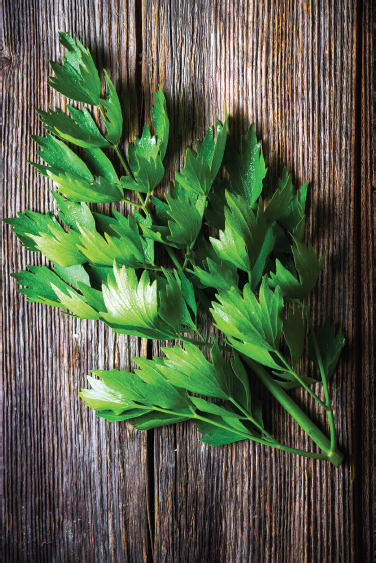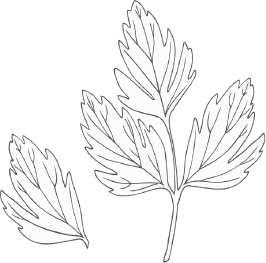

The Plant
Lovage’s leaves resemble celery—flat, deep cuts, and a rich green color. Its graceful stalks can reach a height of six feet and are an attractive backdrop to a flower bed or herb patch, or a lush filler in an empty corner of the garden.
The Flavor
Lovage’s leaves not only look like celery, they have a deep, intense celery flavor. Its stems bear the same celery taste—raw and strong and unbleached. Lovage seeds are edible, too, and can be used as celery seeds are, although in smaller amounts since they carry a more concentrated flavor.
Growing Needs
The plant will flourish in rich soil; it will grow well in moist soil that drains well. Given full sun, the foliage becomes a deep green and equally flavorful; with less sun, the leaves are paler and milder. It is an unfussy, hardy perennial.
Lovage will grow indoors in fertile potting soil.
It frequently re-seeds itself. It tolerates being transplanted, especially when it is young. Old plants can be divided; rootings with green shoots can be planted successfully in early spring.
Snip fresh leaves as you need them. If you like mild tasting stems, cut the lightly colored, young growth in the spring.
Storage
The leaves dry well and retain their robust pungency. Hang bunches of them in a warm, dry spot for a few weeks; then, when dried fully, crumble them into airtight containers.
The stems don’t dry well. They’re too tough and have too high a moisture content. Plan to use them only in their fresh state.
Catch the dried seeds by hanging the seed heads upside down in paper bags.
Culinary Suggestions
Use lovage wherever you would use celery, but use it sparingly. It has a strong, robust character. Chopped fresh, mature leaves and stems brighten soups, stews, and hearty beef roasts.
A few chopped young leaves work well in tossed salads.
Add seeds to bread dough. Sprinkle them over potatoes or rice or garden salads.
The hollow stems make tasty straws. Serve them standing in tall glasses of tomato juice.
Distinguishing Qualities
Lovage announces its presence in whatever dish it is placed. It is savory, whether used fresh or dried.

Tips
Become acquainted with lovage before you use it in large amounts; then experiment. A few tender leaves bring springtime to a dish of creamed new potatoes and peas.
Use dried seeds or dried foliage in bouquet garnis.